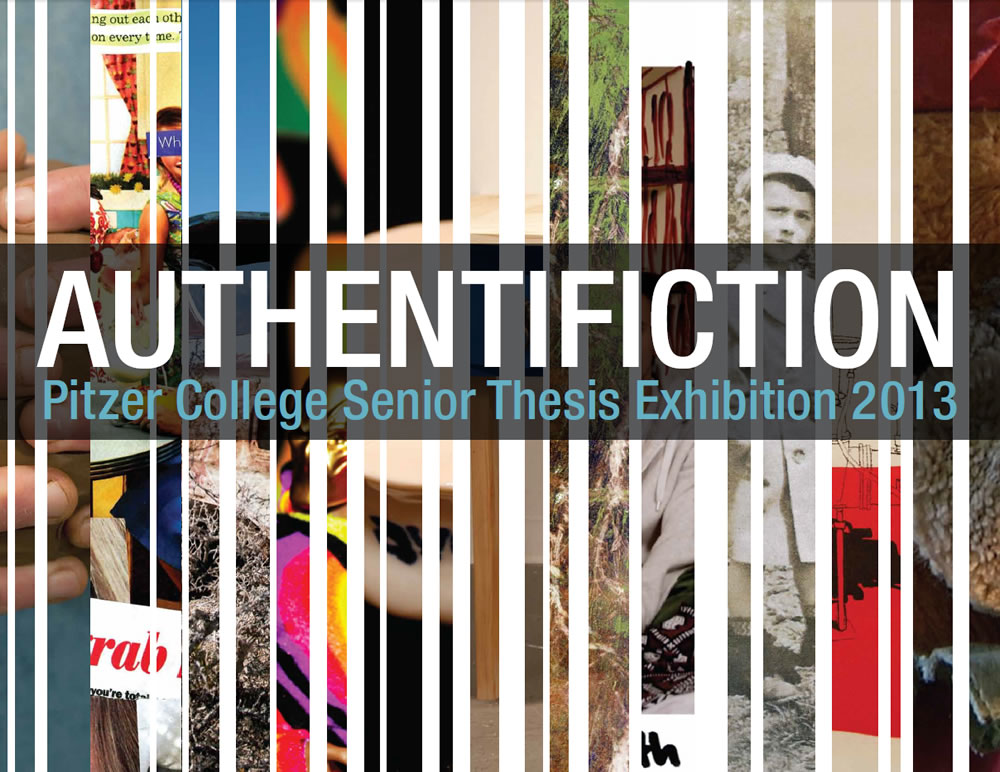
AUTHENTIFICTION: Senior Art Exhibition 2013
April 25-May 18, 2013
Nichols Gallery, Broad Center
Lenzner Family Art Gallery, Atherton Hall
Barbara Hinshaw Memorial Gallery, Grove House
Annie Brown

Inspired by both modern and classic realists like Vija Celmins and Rembrandt van Rijn, my detailed drawings explore the fashion industry and its influence on standards of beauty through a humorous and timely critique. The title is inspired by a quote by Elizabeth Cady Stanton from her 1880 speech Our Girls: “I would have girls regard themselves not as adjectives but as nouns.” A Series of Adjectives is informed by body politics, pop culture and my personal relationship with feminism.
Using graphite, I create semi-realistic reproductions of modeling photographs juxtaposed with clippings from fashion magazines. The snippets of text underneath each drawing contextualize each photograph by bringing to light my unglamorous experiences with modeling. The layout of each drawing suggests those of Polaroids and models’ cards—both everyday items in the modeling industry.
Using editorial-like photos from a high-fashion modeling agency and presenting them with their final context of fashion magazines, I try to show the demeaning and unglamorous process in which images of still developing, body-obsessed youth make their way into women’s magazines. I explore how being on both the giving and receiving ends of this system impacted my life and ask viewers to examine the media more critically by looking at how its messages affect our sense of self. [clear]
Lauren Cronk
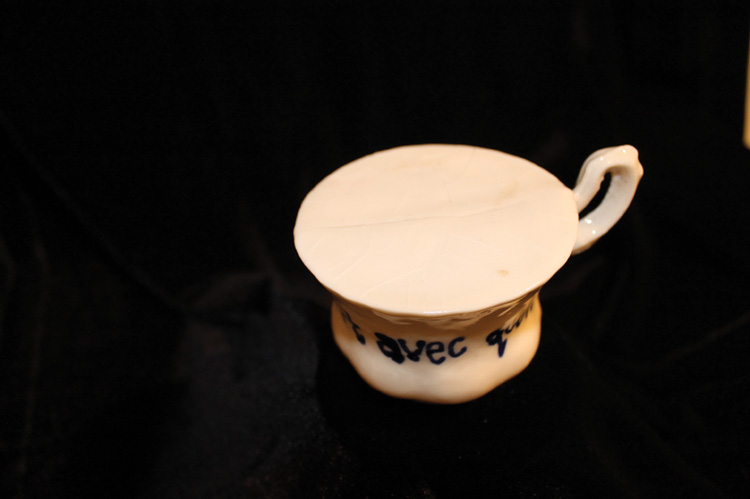
Playing with notions of nostalgia, distortion and the functional agency of objects, my work acts as a non-traditional portrait of a family lineage. Altering found objects from antique shops and casting them in porcelain, these now non-utilitarian objects become stand-ins for those who have left us. Combining antique furniture and slide projections to create a chaotic yet comfortable atmosphere, What We Have (on fait ce qu’on peut avec ce qu’on a) strives to mimic the eclectic, disorganized nature of one’s memories. [clear]
Kayla Friedman-Barb
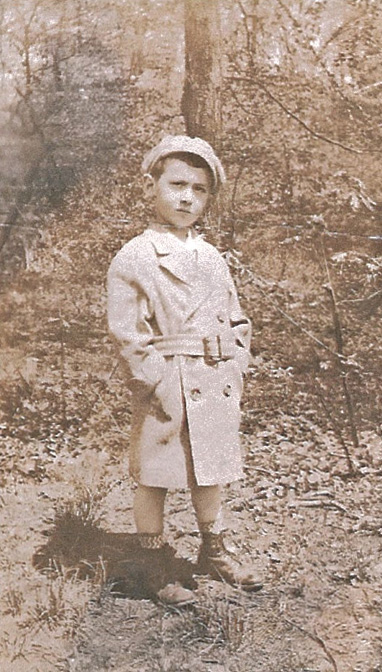
I am a collector of abstract histories. My experimental animation and non-linear recordings incorporate personal stories, abstract themes and distorted remembrances. The works include hand drawings, home videos, cut-outs, spoken word and photographs.
Disguised by personal and sometimes even mundane stories, my pieces transport the viewer to a place located between the individual and the collective. My work lies on the delicate boundaries of complicated and simple, important and unimportant, alienating and inviting, as I work toward creating portraits that are both general and specific.
Inspired by an African proverb, “Every time an old man dies it is as if a library has burnt down,” I use the tradition of oral storytelling to collect the experiences of an aging generation. These stories represent an entire collective memory as well as a first-person account of United States history, reminding us about all the things that came before.
“I just want to recognize anonymous everyday life.” – Do-Ho Suh [clear]
Taylor Kamsler
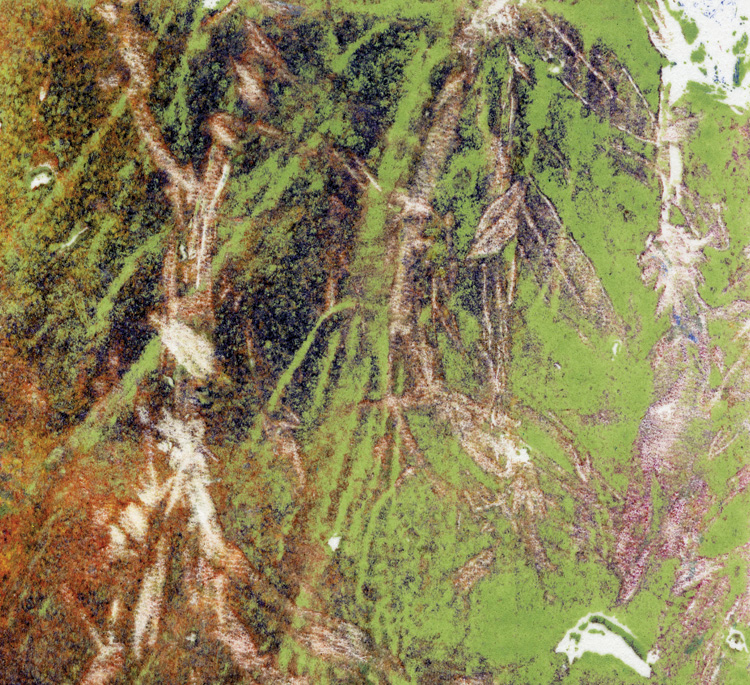
My work is about connections. At first they may appear far-fetched, sometimes relating seemingly disparate ideas, people or structures. Though continuous, self-sustaining systems drive the biotic and abiotic processes of the earth, emblems of human infrastructure interject into these systems, disabling their ability to sustain their prehistoric formats. The prevailing global paradigm suggests increased connectivity; I explore the areas where this theory falls apart. In my work, fragmented imagery, broken cycles and degraded input/output apparatuses coexist with looping time and interconnected webs of movement.
Material selection plays a large role as I contend with issues surrounding consumption. By letting the material inform what I create, I relinquish a certain amount of control. The process comes first and aesthetics follow. Collecting local clay and native plants forces me to become intimately aware of the place I inhabit. I often produce utilitarian or familiar objects to invite a deeper interaction with the works. I work mainly in three dimensions utilizing ceramic and found objects. I negotiate the space between permanence and ephemerality. [clear]
Alycia Lang
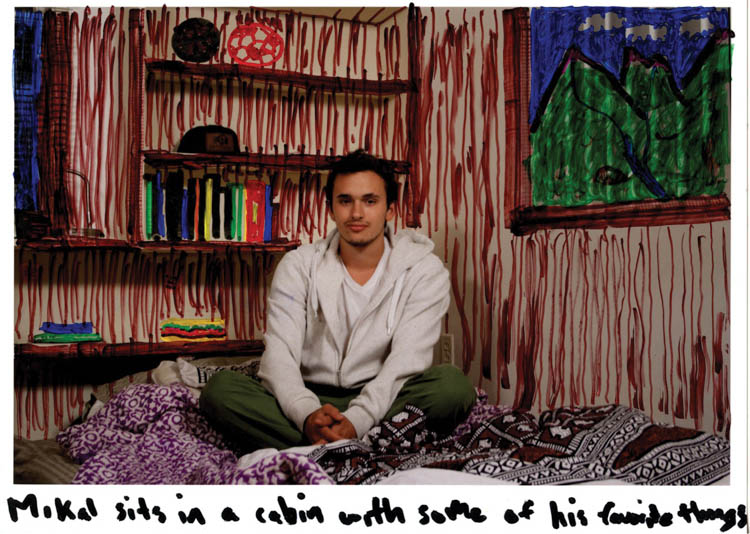
I am an artist with an avid interest in examining how everyday use of media, specifically photography, reflects larger cultural beliefs and practices. This collaborative work is a study of how photography, as an implicitly “realistic” medium, informs the way we picture others and ourselves.
My collaborative portraits are positioned within a larger context that encompasses the historical use of photographic images to categorize, document and solidify identities. Referencing the 19th-century notion of “photography as truth,” I consider the present day use of the medium as a device for intentional reality-making in physical and online (non-physical) spaces.
Influenced by artists such as Cindy Sherman, Jim Goldberg and Gillian Wearing, my work explores the juncture where the photographer’s viewpoint meets that of their subjects’ self-image. In so doing, the notion of authorship is blurred, as is the inherent ability of the photographs to provide veritable information through visual accuracy.
This series of large-scale digital prints and their altered counterparts deconstructs the perception of photography as an inherently truthful medium by adding another dimension to how identity is formed through photographic images. Through the work’s interactive component, the photographed subjects are invited to examine and reconstruct their own relationship to the medium and to images of the self. [clear]
Max Macsai-Kaplan
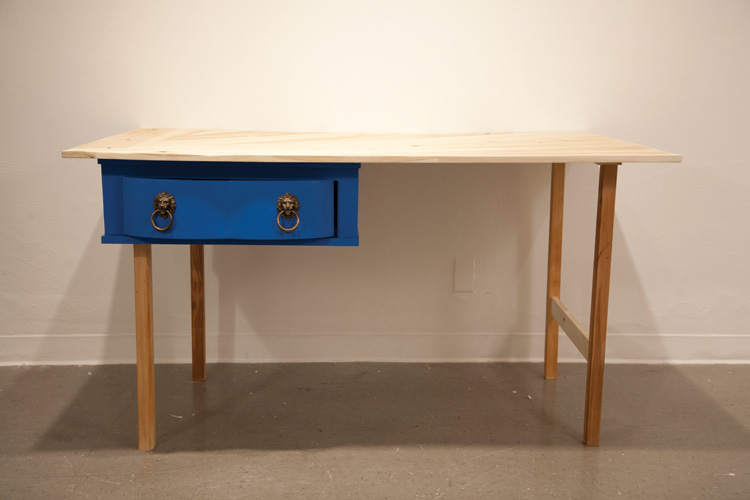
My approach to producing work is to create synapses between the material and the viewer’s normal interaction with it. My work aims to question the tradition of handcrafted furniture by introducing reclaimed wood into the production process. Blurring the line between the sculptural and the functional, this work references the SoFa movement—which attempts to erase the line between fine art and craft. The use of the inherited ornamental features references the former life of the object. Through my approach, I find myself entering into new aesthetic grounds. By working with everyday discarded materials and the Ifading practice of craft I attempt to bring the viewer’s gaze back to the physical and constructed world that we live in. By highlighting these ideas I hope to create a new consensus regarding art and functionality. [clear]
Sky Martin
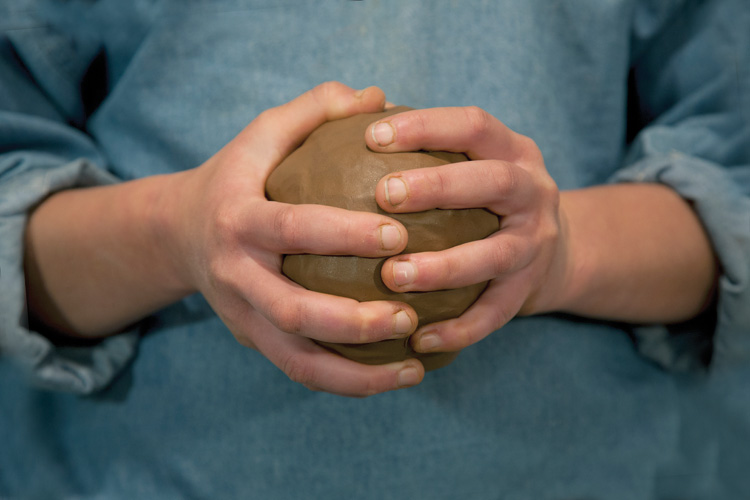
When I dream, there is no narrative. The images themselves contain a story. I have dreamt of a place, with my friends, where I escape the monotonies and stresses of my everyday life, filled with cold, mass-produced objects that shape my society. In this world, I become so distracted, I forget the ground is alive, but when I am standing on dirt, free of concrete or flooring, the earth is full of past stories, and life, that offers new stories to write. I often run to the San Gabriel Mountains, where I have found red dirt, the color of the castle in my mind. And so I am writing stories with images instead of words, in dirt, instead of letters. I am remembering the ground and that it is alive with old and new.
An environmental and spiritual cycle is completed with the meeting of mind and matter, when my imagination is grounded and the ground is imagined. [clear]
Charlotte Pradie
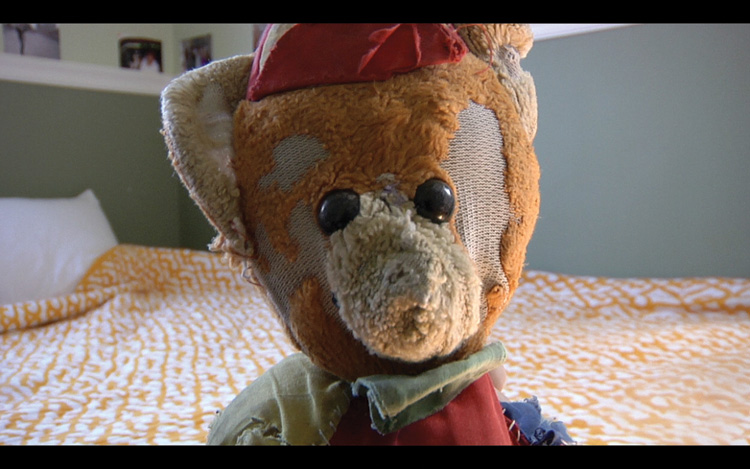
My video work takes the form of short, character-driven portraits. These geometric and simply framed compositions are produced using available light with minimal work done in post-production. Similarly, my photographs—portraits of my family or close friends—are also centrally framed and geometrically composed using available light. My photographic practice is personal and sometimes unsettling, hearkening to the tradition of portraiture set forth by photographers like Nan Goldin and William Eggleston, who disturb notions of the everyday and familiar. My work also examines the way in which the familiar becomes disturbing, and goes further to try to reconcile this disruption of my everyday life. This reconciliation can be found in my video work, in which I use humor to discuss the emotional turbulence inherent in my photographs. My videos center on my childhood stuffed animal, “Bearmax,” who “talks,” using my voice, about familial tensions in an honest and dryly comedic way. My work emphasizes the right to self-representation and self-reflection broadcast on a larger scale; I bring personal issues into the gallery, and engage viewers in my process of reconciliation, coping and even self-pity. I encourage viewers to reflect on these issues and recognize both the isolating and universal qualities of family conflict. [clear]
Janak Tull
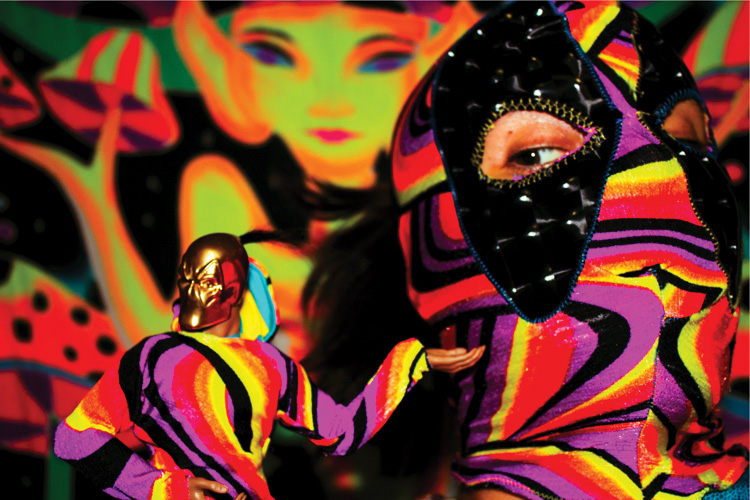
My work is a study of transformation and time through diverse materials and fabrics. The clothes that I make are designed to articulate different avatars that relate to fragments of my experience. Each one of these has its own identity and character. To actively engage the viewer in a new experience, I use fabric that is textured and optically challenging. My practice references artwork made in the ’60s and ’70s that blurred the line between sculpture and performance. Interaction and participation are major aspects of my practice, as they celebrate collaborative action. My ethnic background is completely confused. I have no definite cultural identity, and for this reason I have spent the entirety of my life exploring pseudo-American cultural identities. My exploration of these identities is meant to be humorous, not offensive. [clear]
Nick Williams
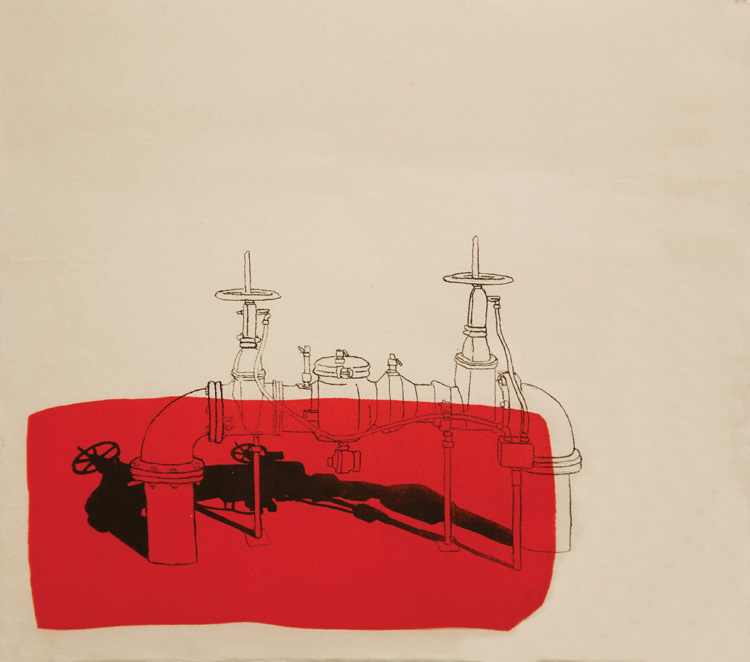
A certain fascination with industrial forms, specifically those found withing the domestic sphere, resides in my work. I am constantly influenced by my own sense of place, and an object-oriented exploration of place has become a thread throughout my practice. I work mainly in drawing and printmaking, and through many years of experimenting with these media I have gathered the essential qualities of what I find to be most effective for my work, and distilled qualities into a minimal aesthetic.
Drawing on the visual traditions of surrealism, minimalism and pop art, this series of prints isolates and decontextualizes industrial forms from their suburban infrastructure. I am working with a variety of influences, particular Bernd and Hilla Becher’s photography, Greg Eason’s drawings, and prints from artists such as Ed Ruscha and Ken Price. My practice utilizes the concept of Shibusa, a Japanese aesthetic tradition that finds balance between simplicity and complexity in everyday objects. By playing with scale, spatial positioning and repetition, I seek to activate the surreal in the everyday, to uncover underlying aesthetic and iconographic meaning within these forms. [clear]
Ilse Wogau
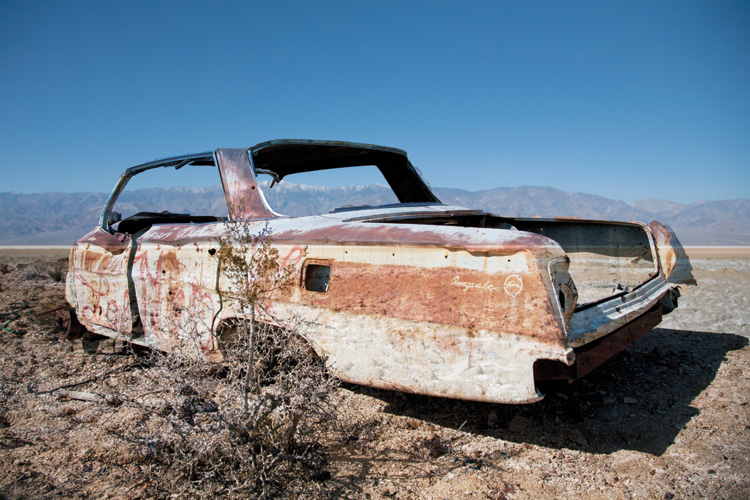
Influenced by the study of perception and its relationship to thought and reality, I use photography to introduce different possibilities to those realities. My images contain fractions of truth enhanced by the surreal. A sense of tension forms when it is difficult to distinguish the “real” from the “unreal” within a spatial or augmented reality.
Using photographs taken of the Mojave Desert, I push the boundaries of preconceived realities by manipulating digital images. On the surface, the images appear ghost-like and provoke a feeling of loss and isolation. However on further evaluation, the desert appears to be reclaiming itself, forming a surreal reality between nature and the contrived.
Through the use of found or re-created objects and acrylic paint, form and texture are introduced into the large-format digital prints. Negative space is used as a canvas in which to displace the fractured landscape.
Perception of reality is a fluid concept. These perceptions are influenced by our beliefs and life experiences. Using photography I invite others to contemplate possibilities related to the forces of nature.
 WORLD IS WATCHING – MANIFESTO
WORLD IS WATCHING – MANIFESTO